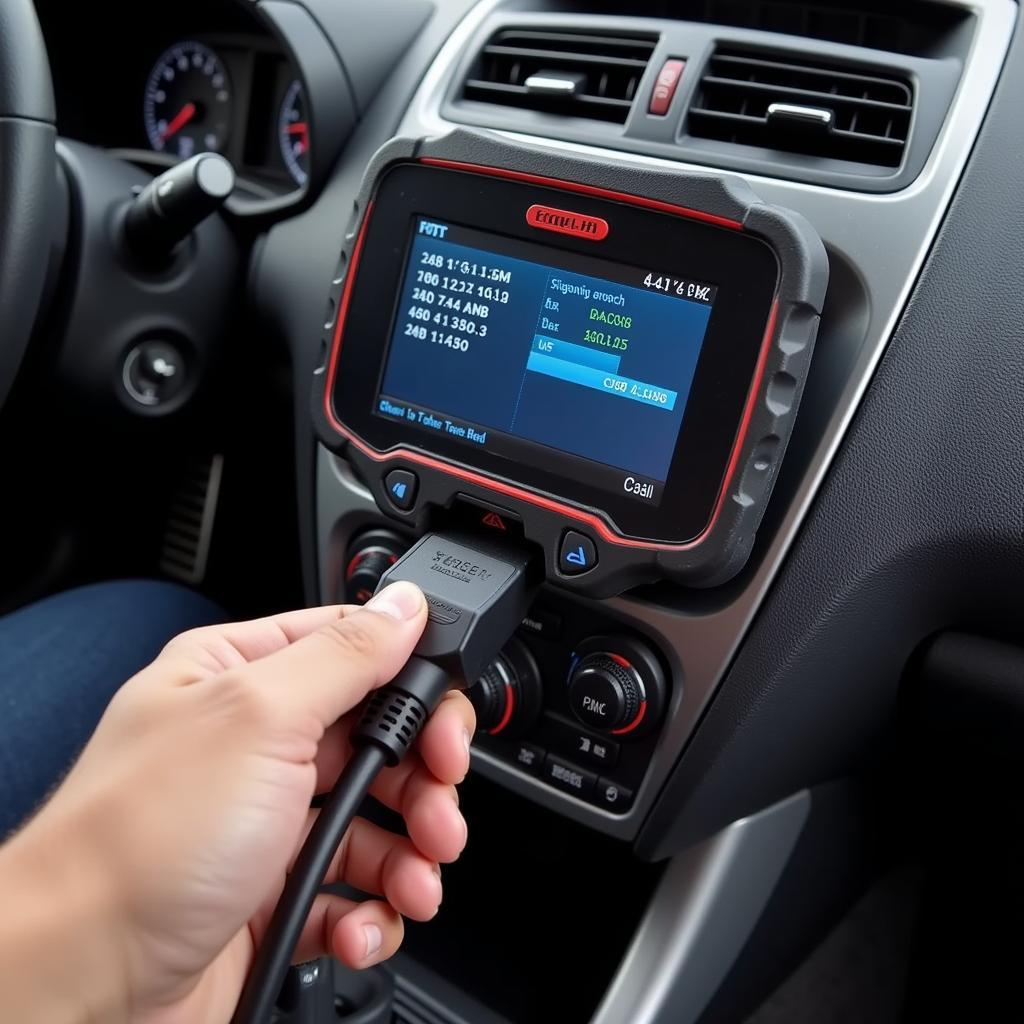Understanding which fuse controls your vehicle’s anti-theft system is crucial for troubleshooting electrical issues. A malfunctioning anti-theft system can leave you stranded, so knowing how to identify and replace the correct fuse can save you time and money. This guide will delve into the intricacies of car anti-theft systems, focusing on the fuse that powers them. We’ll cover everything from locating the fuse box to diagnosing and replacing the fuse, empowering you to handle these situations confidently.
Understanding Your Car’s Anti-Theft System
Modern vehicles employ sophisticated anti-theft systems to deter thieves. These systems range from basic key fobs with immobilizers to complex alarm systems with GPS tracking. At the heart of these systems lies a network of electrical components powered by a dedicated fuse. The anti-theft system’s primary function is to prevent unauthorized starting of the vehicle. This is typically achieved by disabling the fuel pump, starter motor, or ignition system. Understanding how these systems work helps you appreciate the role of the “what fuse controls anti theft” question.
Locating the Anti-Theft Fuse
Finding the correct fuse starts with locating your car’s fuse box. Most vehicles have two fuse boxes: one under the hood and another inside the cabin, usually beneath the steering wheel or dashboard. Your owner’s manual is the best resource for pinpointing the exact location and identifying the “what fuse controls anti theft” fuse. The manual will typically include a diagram labeling each fuse and its corresponding circuit.
Identifying the Correct Fuse
Once you’ve located the fuse box, the next step is to identify the “what fuse controls anti theft” fuse. Again, your owner’s manual is invaluable. Look for labels such as “ANTI-THEFT,” “SECURITY,” “ALARM,” or similar designations. The fuse itself is usually a small blade fuse, but its amperage can vary. The owner’s manual will specify the correct amperage for the anti-theft fuse.
“Always double-check the owner’s manual before replacing any fuse. Using the wrong amperage can damage the system or even cause a fire,” advises John Smith, Senior Automotive Electrical Engineer at AutoTech Solutions.
Testing the Fuse
After identifying the “what fuse controls anti theft” fuse, you need to test it. You can do this visually by checking for a broken filament inside the fuse. Alternatively, use a fuse tester or a multimeter to check for continuity. A blown fuse indicates a problem within the anti-theft system circuit.
 Testing a Car Fuse with a Multimeter
Testing a Car Fuse with a Multimeter
Replacing the Fuse
If the fuse is blown, replace it with a new fuse of the exact same amperage. Never use a higher amperage fuse, as this can bypass the circuit’s protection and lead to further damage. Push the new fuse firmly into the slot.
“A common mistake people make is using a paperclip or wire to bypass a blown fuse. This is incredibly dangerous and can cause serious electrical problems,” warns Maria Garcia, Lead Diagnostic Technician at Apex Auto Repair.
Troubleshooting Common Anti-Theft System Issues
Sometimes, replacing the “what fuse controls anti theft” fuse might not resolve the issue. This could indicate a deeper problem within the anti-theft system, such as a faulty sensor, a wiring issue, or a problem with the car’s computer. In these cases, it’s best to consult a qualified automotive electrician.
Diagnosing More Complex Problems
If the problem persists after replacing the fuse, further diagnosis is necessary. This may involve using diagnostic tools to read trouble codes from the car’s computer. These codes can provide valuable clues about the source of the problem.
 Car Diagnostic Tool Connected to OBD Port
Car Diagnostic Tool Connected to OBD Port
Conclusion
Knowing “what fuse controls anti theft” can be a lifesaver when dealing with a malfunctioning car security system. By understanding how to locate, identify, test, and replace this crucial fuse, you can often resolve the issue yourself and get back on the road. Remember to always consult your owner’s manual and, when in doubt, seek professional help. Don’t let a blown fuse leave you stranded; empower yourself with the knowledge to handle this common car problem.

